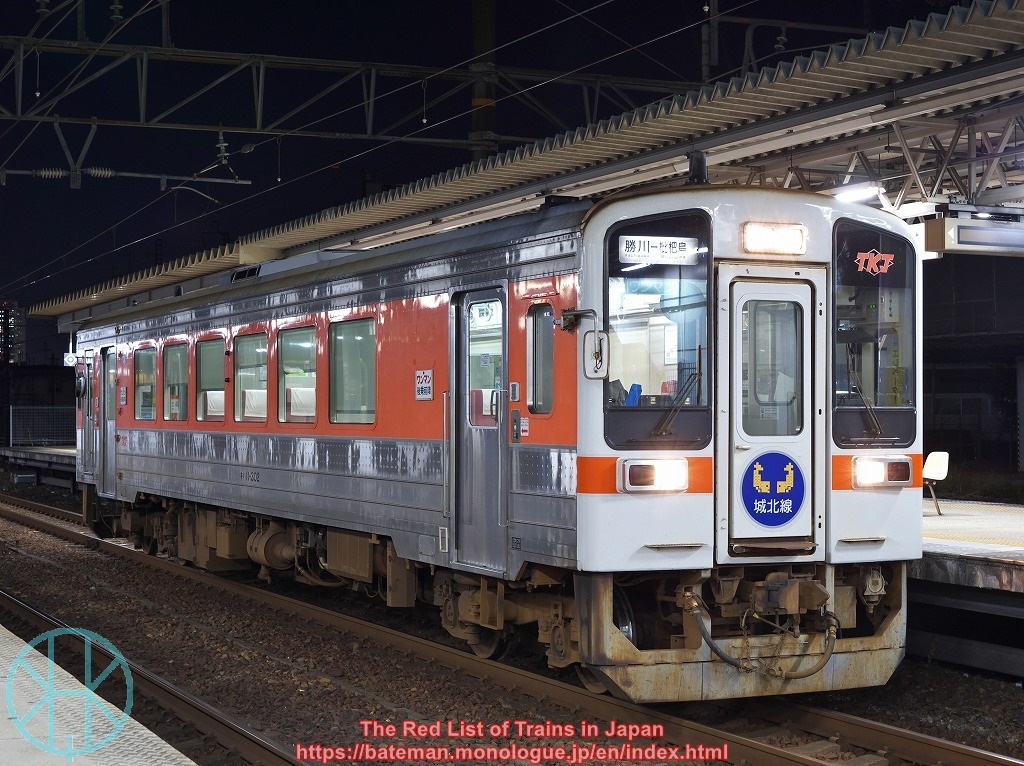JR Central KiHa 11 series

Data (as of 29 Nov 2025)
| Status: | Near Threatened |
| (JR Central) | |
| Least Concern | |
| (Hitachinaka Seaside Railway, | |
| Tokai Transport Service) | |
| Constructed in: | 1988, 1993, 1999 |
| Number built: | 43* |
| Registered: | 9 |
*Including two introduced by Tokai Transport Service.
History
The KiHa 11 series is a type of suburban diesel train to replace KiHa 35 series and KiHa 58 series. The KiHa 11 series is double-ended and compatible with driver-only operation, contributing to reducing costs of maintaining rural lines.
Those introduced in 1988 were for Kisei Main, Meisho, Sangu, Taita and Takayama Main Lines. Those introduced in 1993 were for Tokai Transport Service Johoku Line, a subsidiary of JR Central. JR Central itself introduced more in 1999, whose body is made of stainless-steel with a toilet.
Those introduced in 1988 were replaced with KiHa 25 series and reallocated-KiHa 75 series by 2015, and all but one were exported to Myanmar (though several carriages are still waiting for shipping). Tokai Transport Service purchased those with stainless-steel body in 2015, replacing older carriages. The older ones were resold to Hitachinaka Seaside Railway.
Current Operations & Future Prospects
Currently, JR Central has four with stainless-steel body, and uses them on Meisho Line. Tokai Transport Service uses two with stainless-steel body on Johoku Line, and Hitachinaka Seaside Railway uses three carriages with steel body on Minato Line.
Photos

Those with stainless-steel body were generally used for longer-distance journeys on Kisei Main Line, as they had a toilet.

Johoku Line's train was painted differently, but withdrawn in 2015.

Today, one of two Johoku Line's trains is partly painted like this.
(Updated: 29 Nov 2025)
